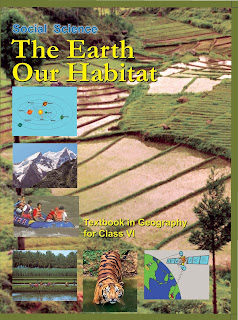NCERT CLASS-6 GEOGRAPHY
CHAPTER- 7 [OUR COUNTRY- INDIA]
- India- from north bound by Himalayas, Arabian Sea in the west, the Bay of Bengal in the east and Indian Ocean in south.
= India has an area of about 3.28 million sq. Km.
- Kashmir to Kanyakumari- 3200 km.
- Arunachal Pradesh to Kuchchh- 2900 km.
- India, located in the Northern hemisphere.
- Tropic of Cancer (23°30’N) passes almost halfway through the country.
- From south to north, main land extends between 8°4N and 37°6N latitudes.
- From west to east =, India extends between 68°7’ E and 97°25’ E longitudes.
- Large countries which stretch from east to west extensively do not have a single standard time for the whole country.
= The USA and Canada have 7 and 6 time zones respectively.
- The sun rises about 2 hours earlier in the east (Arunachal Pradesh) than in the west (Gujarat).
- There are 7 countries that shares land boundaries with India.
- Across the sea to the south, lie our island neighbours- Sri Lanka and Maldives.
- Sri Lanka, separated from India by the Palk strait.
- The country is divided into 29 states and 7 union territories.
- Telangana became the 29th state of India on 2 June 2014.
= Previously part of Andhra Pradesh.
- Delhi, national capital.
- From north, Himalayas, Hima + Alaya mean ‘the abode of snow’.
- Himalayan mountains are divided into 3 main parallel ranges.
= The northernmost is the Great Himalaya or Himadri, world’s highest peaks are located in this
range.
= Middle Himalaya or Himachal Lies to the south of Himadri, many popular hill stations are
situated here.
= The Shivalik is the southernmost range.
- The northern Indian plains lie to the south of Himalayas, generally level and flat.
= Formed by the alluvial deposits laid down by the rivers- the Indus, the Ganga, the
Brahmaputra and their tributaries.
- Western part of India lies the Great Indian Desert.
= It is a dry, hot and sandy stretch of land.
- To the south of the northern plains lies the Peninsular Plateau, triangular in shape, relief is uneven.
= Region with numerous hills ranges and valleys.
- Aravalli hills, one of the oldest ranges of the world border it on the north- west side.
= The Vindhyas and the Satpuras are the important ranges.
= The rivers Narmada and Tapi flow through these ranges.
= west flowing rivers that drain into the Arabian Sea.
- The western ghats or Sahyadris border the plateau in the west and the eastern ghats provides the eastern boundary.
= Western ghats, continuous and the eastern ghats, broken and uneven.
- Plateau rich in minerals like coal and iron- ore.
- West of the Western ghats and east of the eastern ghats lie the coastal plains.
- The Western coastal plains are very narrow.
- The Eastern coastal plains are much broader.
- East flowing rivers- Mahanadi, Godavari, Krishna and Kaveri drain into the Bay of Bengal.
- Corals are skeletons of tiny Marie animals called Polyps. When living polyps die their skeletons are left.
= Other polyps grow on top of the hard skeleton which grows higher and higher, thus forming
the coral islands.
- Lakshadweep islands located in Arabian Sea, coral islands located off the coast of Kerala.
- Andaman and Nicobar islands lie tot the southeast of Indian mainland in the Bay of Bengal.
